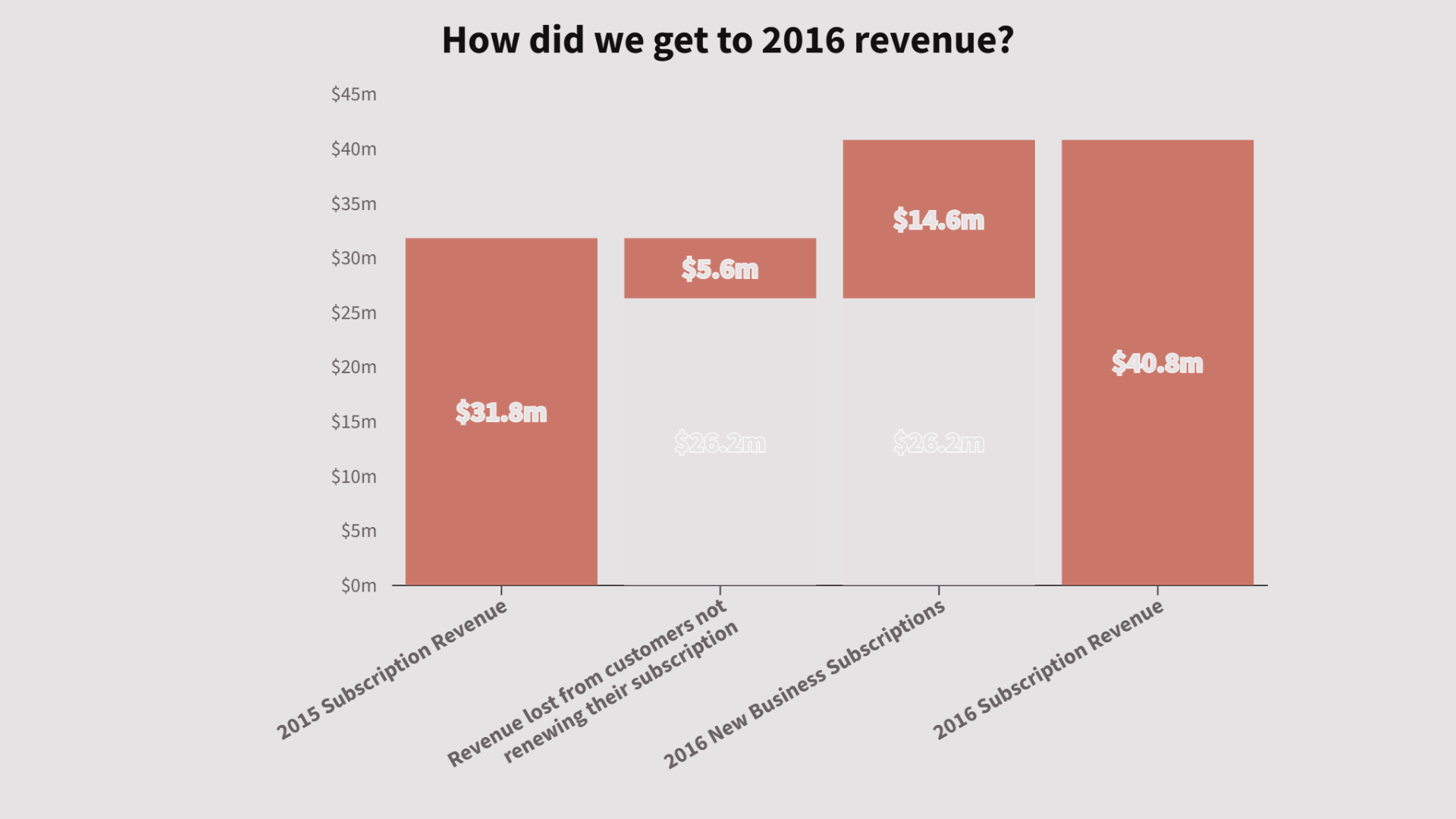Part 1 can be found here. Got it? Great. Time to talk about predictive analytics… or a market basket analysis.
Not every problem lends itself to predictive analytics1Think predictive analytics is a bit of a buzz word? So do I. It’s just probabilistic analysis and forecasting with common sense. But that’s the world of business for you.. Most of the time, the question a stakeholder is asking is: How much is X compared to Y.
However, when looking at what a group of people have in common, predictive analytics comes into its own.
You can get lost in a fog of summary statistics and analysis. Or… You can use predictive analytics to narrow your fact-finding mission.
My Senior Data Analyst interview case study asked this: How can we identify accounts at risk of cancelling their subscription?
Most of the data provided was categorical2Another name for categorical data is qualitative data. Continuous data can also go by quantitative data.—the country the account belonged to, the type of product they used etc.
When working with categorical variables (is the apple red or blue?) over continuous variables (Jane has 3 apples) it’s easier to carry out a Market Basket Analysis rather than a Logistic Regression—the workhorse of statistics.
A Market Basket Analysis, a form of predictive analytics, is also called Association Rule Mining. It looks at a given group (so customers who churned), and then tell you what characteristics those customers had in common (e.g. all based in Antarctica, and had a subscription to ice cubes).
I am, of course, simplifying. This is far more complicated…
In the next post I’ll explain in more detail how a Market Basket Analysis works; the industry it’s popular in (the clue is in the name); and the challenges I faced.
Stay tuned.
This was first published on my LinkedIn.
You can read part 3 of this series here.

